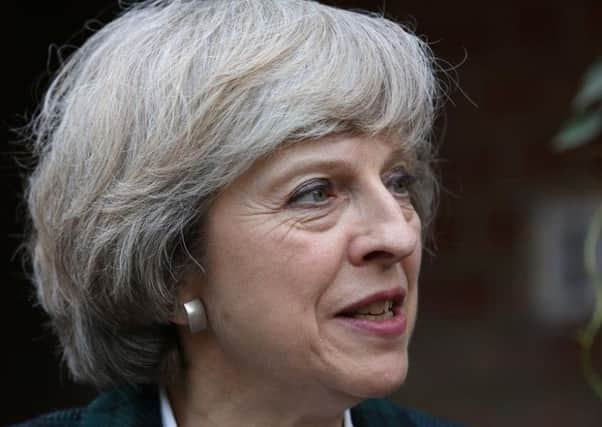Meet Theresa May, Britain's new prime minister


May will take office on Wednesday after the contest to become Conservative leader was unexpectedly cut short by her rival Andrea Leadsom.
May was always seen as the more likely of the two candidates to prevail but it had been thought that she wouldn’t emerge as the victor until September. Then, after facing a backlash for comments she made implying that being a mother made her the best woman for the job, Leadsom quit the race.
So, who is the new prime minister?
Advertisement
Hide AdAdvertisement
Hide AdSome newspapers obsessed over May’s quirky shoe choices. But she also hit headlines with her admission in 2002 that the Conservatives were often seen as the “nasty party”.
After graduating from Oxford, May spent her early career on a London council and at the Bank of England. She was elected to the House of Commons in 1997 as MP for Maidenhead in Berkshire. Her star rose quickly and she became shadow Secretary of State for Education in June 1999, when the Conservative Party was the party of opposition.
When then leader William Hague departed, his successor Iain Duncan Smith appointed May as shadow Secretary of State for transport. Then in 2002, she became chairman of the Conservative Party.
Her style was calm, collected and, as the “nasty party” reference suggests, not afraid to point out uncomfortable truths in order to help her party win power. Under Duncan Smith’s successor, Michael Howard, May returned to the transport portfolio, before moving to culture, finally becoming shadow leader of the House of Commons in 2005 when David Cameron rose to the leadership.
Advertisement
Hide AdAdvertisement
Hide AdAfter a short stint as shadow Secretary for Work and Pensions, May took up her more permanent position as Home Secretary after the Conservative Party came to power as the lead partner in the 2010-2015 coalition government. She held that position right up until now – an exceptionally long stint in one of the government’s toughest jobs.
Traditionally in British politics, it was anticipated that Prime Ministers would occupy two of the three large governmental positions before becoming Prime Minister, those positions being Home Secretary, Foreign Secretary and Chancellor of the Exchequer. However, many Prime Ministers have not held more than one of those positions, and some have held none.
Tony Blair had famously never held a government position before becoming Prime Minister, as the Labour Party had been out of power for the entire duration of his career as an MP. Cameron, too, had never held a Cabinet position before becoming Prime Minister, although he had been a special adviser to Norman Lamont while he had been Chancellor. In modern times, only Jim Callaghan (1976-1979) and John Major (1990-1997) had fulfilled the traditional apprenticeship of government.
Waiting for the vision:
For May, there will be no “third way” or “Liberal Conservatism”. She is seen as being to the right of Cameron, who represents the more centre-right element of the party.
Advertisement
Hide AdAdvertisement
Hide AdWe can expect May’s leadership to be defined by the Brexit talks. May has cast herself, not just since the referendum vote, but since her arrival in parliament, as a steady pair of hands. She will need to live up to that reputation in a political environment which is unpredictable and tumultuous.
The lack of a longer leadership campaign means that May has not been pressured on any of her policies, nor has she had the opportunity to explain and justify them to the party and the public.
It seems likely that Britain’s new PM will attempt to “steady the ship”, securing Britain’s relationship with the EU. She said as much in a speech outside parliament when her leadership was confirmed. Brexit, she said, means Brexit, and securing a good deal must be the top priority.
But she will also have to heal her party’s nasty wounds. And even if she didn’t say as much, this problem will have to come first – at least chronologically. The Conservatives have been bitterly divided over the European issue for many years and the referendum has only deepened the rift.
Advertisement
Hide AdAdvertisement
Hide AdSo, before starting protracted negotiations with the EU and various other key trading nations, May will need to bring peace to her own team. And while her first cabinet may give us a hint as to her intentions, it may be some time before her vision for Britain becomes clear.